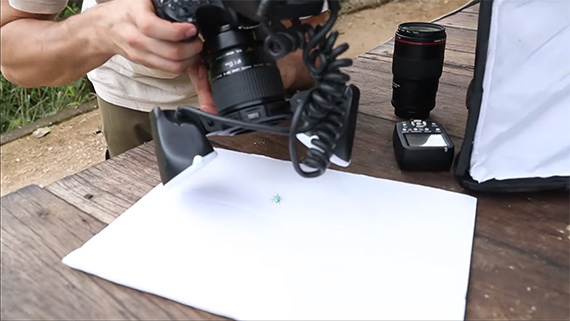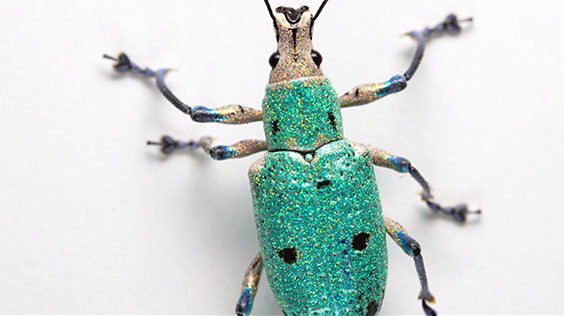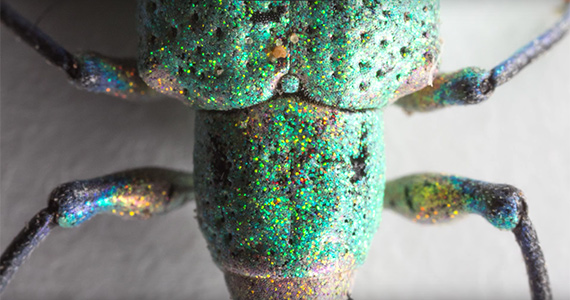As a whole, humans are quick to write insects off as hideous, filthy creatures that serve little purpose beyond being a nuisance. However, one tropical entomologist is on a quest to slowly but surely change that notion. An old saying claims that beauty is in the eye of the beholder, and Phil Torres does everything in his power to prove just how beautiful a lowly bug can be. Torres explains to viewers just what goes into making a stunning insect macro in the field:
The first step? Finding the right subject. In this case, that happens to be Compsus Benoisti, a critter that looks more like a brooch than a living, breathing entity. Stored safe inside of a vial, the weevil can be left unattended for up to 24 hours without any risk of harm. Once the subject is found and secured, it’s back to the outdoor “base,” where Torres keeps his gear.
Torres switches between two lenses when photographing his specimen: a Canon 100mm f/2.8 macro and an MP-E 65mm macro. However, there’s gear to consider that goes beyond the camera. Having a diffused light source is equally important to the lenses and camera bodies at play, Torres explains.
He utilizes two options in this particular shoot. First, a simple speedlite equipped with a pop-up mini softbox is employed. Later on, he puts away the speedlite in favor of a Canon MT-24EX macro twin light, which attaches directly to the end of the lens.
For those just beginning to take on insect photography and work with new pieces of equipment, Torres stresses the importance of practicing with a slow or stationary object. That way, there won’t be much of a need for adjustments when working out in the field.
There’s one more important piece of equipment to consider: a backdrop surface. Above all, it’s important to find material that’s completely smooth—a piece of paper or foam generally won’t do. Because the macro lenses are so strong, any sort of patterns, scratches, or bumps on a backdrop will show up. Torres generally opts for 1/4″ opaque or glossy white acrylic, sized appropriately for travel.
Once the materials have been gathered, the main challenge is getting a subject to cooperate. Should you need to calm down your specimen, try storing it in a dark place prior to the shoot. If the insect is anxious to crawl away before you get your shot, simply flip it onto its back. As it struggles to get right-side-up, you’ll have a few seconds to really focus in and perfect a composition.
At first, the key to success above all is patience. It takes time to develop and master an effective technique. With practice, a little bit of luck, and the implementation of Torres’ tips, you’ll be sure to grab a shot in time that totally alters the way you look at beetles, spiders, ants, and slugs of all shapes and sizes!
“When hiking in the rain forest of Ecuador, you see some incredible things, whether it be a giant leaf, a hummingbird, or an amazing view. But nothing prepared me for this little guy.”
Like This Article?
Don't Miss The Next One!
Join over 100,000 photographers of all experience levels who receive our free photography tips and articles to stay current:









Wow, what a great idea to use white background in the field! It will save time and won’t need to use Photoshop to make the background white. Thanks.
Thank you. Fantastic to watch. Truth be told, I got a beautiful idea in this way.